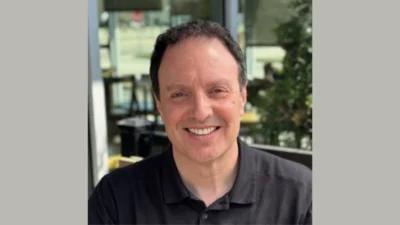City of Highland Park Plan and Design Commission met Nov. 19.
Here is the minutes provided by the commission:
I. CALL TO ORDER
At 7:30 PM Vice Chair Reinstein called the meeting to order and asked Director Fontane to call the roll.
II. ROLL CALL
Members Present: Glazer, Kutscheid, Leaf, Lidawer, Pearlstein, Reinstein
Members Absent: Hecht
Director Fontane took the roll and declared a quorum present.
Staff Present: Burhop, Cross, Fontane
Student Rep.: None
Council Liaison: Bloomberg, Schuster
III. APPROVAL OF MINUTES
The minutes for the November 5, 2019 meeting will be considered at the December 3, 2019 meeting.
IV. SCHEDULED BUSINESS
1. Continuation of Public Hearing #19-09-SUP-004 for an Outdoor Restaurant, a Conditional Land Use in the B2-RW Zoning District, for Ravinia Brewing located at 582 Roger Williams Ave.
2. Continuation of Public Hearing #19-09-SUP-003 for a Restaurant with Dancing and Entertainment, a Conditional Land Use in the B2-RW Zoning District, for Ravinia Brewing located at 582 Roger Williams Ave.
Vice Chair Reinstein entertained a motion to continue Items 1 and 2 to December 3, 2019. Commissioner Lidawer so motioned, seconded by Commissioner Pearlstein. On a voice vote, the motion carried unanimously.
3. Public Hearing #18-10-ZTA-003 for Proposed Changes to the Zoning Code for the Addition of New Experiential Land Uses and Modifications to Existing Land Uses, Including Changes to Land Use Tables, Definitions, and Parking Requirements; Amendments to the POSO and BR-2W Establishment and Purpose Language; Addition of Standards for Section 150.1404(A) and Section 150.902(G) Regarding Special Uses and Changes to a Non-Conforming Use.
Vice Chair Reinstein entertained a motion to continue this item to December 3, 2019. Commissioner Kutscheid so motioned, seconded by Commissioner Lidawer. On a voice vote, the motion carried unanimously.
4. Public Hearing #19-08-ZTA-003 for Proposed Changes to the Zoning Code Related to Lake Michigan Protection Zone and Steep Slope Zone Regulations.
Planner Burhop made a presentation for the above including background, notice, draft notice text change, standards of approval, beach structure, standards of approval and beach structure standards.
Commissioner Leaf stated under the definitions of adjacent properties it mentions ten properties and this is three properties up and down. He was not sure which was incorrect.
Commissioner Glazer stated they usually require ten, three in one direction and ten in the other.
Planner Burhop stated Commission Glazer was correct. That is probably their most standard requirement and that is probably the most common. The adjacent property comment is already existing in the code. They could either go with that or strike it. It would no longer be relevant.
Commissioner Leaf stated he was just confused in reading it.
Planner Burhop stated he agreed and it is confusing.
Mr. Schuster they can modify it and then before it moves to Council they can re-evaluate to make sure there are no other places in the code where it would trigger an inadvertent error.
Planner Burhop stated it is confusing. The Commission could consider three things: one would be striking adjacent properties or changing the notice to being ten up and ten down or strike both and continue with the original 100’.
Mr. Schuster stated the definition of adjacent properties which is used in the ordinance and in other places. One thing to consider is the notice issue may be a different issue than some of the standards. In Section 703.1(E)(3) it talks about some of the standards that shall be evaluated. Some of the standards would be the impact on adjacent properties. The idea is the standard that is being looked at is whether the improvement is going to affect those ten properties which is different than the notice requirement. If they want the notice requirement not to be the ten they can do that on the requirement so it comports to that definition. It is just a different concept on who gets notices.
Vice Chair Reinstein stated it was written the way they wanted it to be and is not a contradiction but two different things. There is the standard and the notice.
Commissioner Kutscheid stated the reasonably impacted may go beyond the ten lots and definitely go beyond the three lots up or down. If you are a property owner who may be impacted by an improvement to the shore are you noticed. You are not noticed at all if you are beyond three or ten.
Mr. Schuster stated the notice can be what you desire. In zoning it is not based on the number of properties but on feet. It is what you think from a policy perspective is best in terms of notice.
Commissioner Kutscheid asked if it would be appropriate to notice people who are reasonably thought to be impacted by a development.
Mr. Schuster stated he would recommend a definitive distance or number of properties because that way they know it has been done and complied with. The concern about who would be reasonably impacted is how do you define that. You would not want someone to say they are impacted and never received notice. His recommendation would be if they want to leave it as it is they could or pick a distance requirement or number of lots. It should be something that is an objective criteria so both applicants and staff know what standard to apply.
Commissioner Lidawer stated she thought specificity is necessary in terms of guidance to staff. She understood the three and ten distinction and thought that they are different and not inconsistent. They do not want to make the process more onerous and she thought it would be important if something happens and it affects people. Go with the ten and ten notification as well as impact and let as many neighbors know as possible. She liked the idea of more notice and did not want to make it onerous and they should make it clear for both staff and an owner. She did not think there was that big of a difference in terms of giving notification.
Vice Chair Reinstein asked if this was an existing ordinance.
Planner Burhop stated the current requirement is the City notices the ten properties up and down water and that is notice for the SAG meeting that will consider the application. In staff’s report in September they talked about having some kind of notice and recommended something along the line of an infill development which goes to abutters. At the meeting the Commission recommended 100’.
Vice Chair Reinstein asked if the IDNR and Corps are sending notices as well.
Planner Burhop stated it depends on the project. Commissioner Glazer was right in that one of the more common notices is three one way and ten the other.
Vice Chair Reinstein stated if the City is providing notice usually it is for some event that is taking place.
Planner Burhop stated in this case they had compared it to their infill development ordinance which is a requirement for single family homes. It is basically a requirement that if you do “x” amount of construction on a property you have to let the neighbors know.
Mr. Schuster stated a neighbor would be able to contact staff and get more information. They would be able to bring action in court to try to prevent the project and they have certain legal rights. It is putting them on notice and it is their prerogative on what is the best avenue.
Commissioner Glazer stated as part of the process, the Corps, IDNR and IEPA all have hearings and neighbors are entitled to file objections to any such property requests. They can be filed in writing or appear in person and they can object. The specific rules at the Corps and IDNR require the government agencies to consider the impact to the adjoining properties. The Corps is involved because it is a navigable waterway like Lake Michigan and the regulations they follow are exhaustive. He suggested they not make the process more onerous. If the Corps requires three and ten and the City steps in and says let’s make it ten and ten adds to the burden. He suggested they remain consistent with the other agencies that consider these requests and not add to the level of scrutiny beyond what is already done. These projects are often well publicized and neighbors beyond the required range are aware of them, there are neighborhood meetings and if notice is given just to three neighbors in either direction it is usually sufficient to cover the immediate impact. It is very hard for a project to affect a property ten lots away. Whatever the IDNR and Corps requires should be good enough for Highland Park.
Vice Chair Reinstein asked if there were other issues with Lake Michigan they need to address or is the notice it in terms of moving this forward.
Planner Burhop stated notice was number one and standards are number two.
Vice Chair Reinstein asked if they could handle them both at the same time and listen to the standards now.
Commissioner Leaf stated he did not know if the City had a handle on HOAs and if they control any beach front property. That opens up notice to a much larger extent and may be sliding under what they are trying to do. If an HOA has control over one beach front property how are they noticed.
Planner Burhop stated under the current code there is a requirement in addition to the ten up and ten down, there is a requirement that any HOA that is registered with the City and desires notice also be noticed. A year ago they sent letters to every property in the lake front overlay zone which was about 880 properties by US mail asking if they were in or knew of a HOA who wanted to register with the City as desiring notice. They had two or three responses.
Director Fontane stated there were HOAs.
Planner Burhop stated he had the spreadsheet and thought there were only two.
Director Fontane there might have been three responses and one actual HOA.
Mr. Schuster stated under the code the property owners receive notice if they are owners of property. It would be the unit owners as well as the HOA.
Planner Burhop under the current proposal what is written in the text is any property owner within 100’ and the property owners three up and three down. There is no separate requirement to notice HOAs.
Director Fontane stated the reason why that had come up in the past is maybe there were easements across otherwise owned property.
Planner Burhop stated this is not a substantial change and there is a small difference.
Commissioner Leaf asked about items G and J.
Planner Burhop stated G is the requirement that the only regulated activities allowed are for erosion control, water gathering and public access. If they remove that there is some concern there could be a Tiki bar or boat dock. Staff thought these structures should be limited to erosion control, water gathering and public access. J gets to the Corps and the requirement to submit the necessary permits.
Vice Chair Reinstein stated he recalled when they dealt with this the first time he was the only person who thought they should keep all the standards. He thought the other commissioners may have questions.
Commissioner Lidawer stated she did not understand why if they said take them out and now the discussion is to keep them in.
Planner Burhop stated this was the scope of the project to look at striking or making changes to the standards and in looking at his report he had recommended the applicant to certify they were met. In having the applicant certify they were met is probably the stronger case to protect the City. The Corps and IDNR do review the standards and is hard to know to what extent.
Commissioner Lidawer stated he did say they wanted to get rid of the redundancies and they got rid of them and now they are putting them back in.
Commissioner Glazer stated items G and J should remain and was not sure if the rest of them should. He wanted to make it less onerous and they should count on the agencies to do their job and not require the duplication. He would support keeping the previous two and adding G and J.
Commissioner Kutscheid stated if they have standards in the code that means staff is reviewing the submittals to assure the standards are correct.
Planner Burhop stated yes and the applicant is required to have a professionally licensed engineer or geologist to certify the standard is met. Staff does review this as well.
Commissioner Kutscheid stated the Corps, the State and the City are all reviewing the same thing and determining whether or not they approve the same thing. If one of the three does not approve it then it does not go forward. He asked why the City would overrule the State on environmentally and ecologically intrusive. He asked if the City had the expertise to determine whether something is environmentally and ecologically intrusive.
Planner Burhop stated it is currently regulated.
Commissioner Kutscheid stated he was agreeing with Commissioner Glazer that they should remove duplicate standards.
Commissioner Leaf stated they are talking about B and I being struck.
Planner Burhop stated that was correct.
Commissioner Leaf thought what staff has proposed is reasonable.
Vice Chair Reinstein stated they have finings of fact for the Lake Michigan protection zone and some clarifications they should make as to notice and for the standards to be in and out. He thought there was some discussion about ten up and ten down for notice or trying to remain consistent with other agencies and do three up and three down.
Commissioner Lidawer asked with the standards are for the Corps and IDNR.
Commissioner Glazer stated they did not know exactly what the requirements were and the suggestion would be they approve the greater notice requirement between those two agencies.
Vice Chair Reinstein stated they were asked to make a specific one.
Planner Burhop stated Commissioner Glazer was correct when he said the most common one was three up and ten down.
Vice Chair Reinstein asked if that was because of the way the water moves. He asked Commissioner Glazer if his recommendation was to remain consistent with other agencies with three up and ten down.
Commissioner Glazer stated there was discussion of doing three and three. He thought the logical way was to be consistent with the Corps.
Vice Chair Reinstein asked if it was his suggestion to have it in our code that way to follow the Corps or the IDNR.
Commissioner Glazer stated whichever requires greater notice. He thought it was the Corps along with keeping F, G, H and J in the standards.
Commissioner Leaf stated and striking B and I.
Vice Chair Reinstein stated they would strike all except F, G, H and J.
Commissioner Kutscheid stated one addition would be the 100’ from the property line.
Vice Chair Reinstein stated it would be the greater notice and 100’ from the property line.
Vice Chair Reinstein felt keeping all the standards in made sense. It sounded like F, G, H and J are what Commissioner Glazer is proposing to keep.
Vice Chair Reinstein asked for a motion to approve the findings of fact with the changes to the notice and standards that are kept.
Commissioner Lidawer asked if this will cover both of what they need.
Mr. Schuster stated yes. The proposal is that the greater notice requirement of the two different a agencies plus the 100’. The impact on adjacent properties is based on the definition slightly different ten properties up and ten down. They are looking at perhaps a greater distance in terms of the standards and the notice.
Commissioner Lidawer stated she wanted to make sure they were clear because they are two different things.
Mr. Schuster stated the way they are drafted they are two different things. If they want to make it ten and ten to match the standard that is their prerogative.
Vice Chair Reinstein stated he was looking for a motion.
Commissioner Leaf asked why they would want to keep them the same, the notice vs. the definition. Why are they defining something differently from what they are looking for in the notice.
Councilman Blumberg stated his understanding when Commissioner Glazer first voiced the idea to be consistent with the Corps was that the Corps requires notice of three and three and recognizes the impact of ten and ten.
Planner Burhop stated the IDNR has a requirement for ten properties south and three north. He would have to check his notes for the Corps.
Vice Chair Reinstein asked if for the IDNR ten down and three up was for notice.
Planner Burhop states it was in his notes for the IDNR.
Vice Chair Reinstein stated he was OK with Commissioner Glazer’s notice suggestion.
Commissioner Leaf stated he was not OK with the definition of adjacent properties as written in the text amendment.
Commissioner Kutscheid stated the adjacent properties are defined as ten up and ten down.
Mr. Schuster stated this is what the code currently says. He stated you can change the definition of adjacent and it is a policy decision of how many properties you want to include. You can marry them or keep them apart.
Commissioner Leaf proposed they marry them.
Commissioner Lidawer stated the question is what is more important impactful or notice. It sounds like the Corps has done three and ten but for impact have done ten and ten.
Commissioner Leaf asked if it was ten and ten or three and ten.
Planner Burhop stated the IDNR has two types of permits, the general and this is for parallel beach structures that are 300’ long or less. If the project is more intense they call that an individual permit and do require notice and they require three up and ten down.
Commissioner Leaf asked about the Corps.
Planner Burhop stated the Corps requires a public notice for all individual permits.
Councilman Blumberg asked if they could draft the ordinance to state that notice requirements shall be those as required by the IDNR and impact shall be determined according to the standards of the IDNR. If they change in the future they could continue to mirror them.
Commissioner Kutscheid stated he would still like to see the 100’.
Commissioner Lidawer stated she would like to know what it actually is.
Councilman Blumberg stated they are going to approve and send to Council tonight so they can call the City Manager and find out how they voted.
Commissioner Lidawer stated she was asking it be announced at the next meeting.
Councilman Blumberg stated it could be arranged.
Commissioner Leaf stated they would be looking at the IL agency.
Vice Chair Reinstein stated he was still looking for a motion. Commissioner Kutscheid motioned they follow the IDNR notification requirements plus the 100’.
Commissioner Glazer asked if he meant that they go to three and ten and plus 100 additional feet in all directions.
Commissioner Kutscheid stated 100’ from the subject property.
Commissioner Lidawer stated she had nine typos in the findings and wanted to make sure what they give to Council is complete and have it as part of the motion.
Vice Chair Reinstein stated there is motion on the table for notice to follow the greater of the two agencies and 100’ from the property line. They have standards to be included as F, G, H and J and the definition of adjacent property to be married to the IDNR definition.
Commissioner Leaf mentioned the two agencies and was unclear what it meant.
Vice Chair Reinstein stated it was the Corps and IDNR and both have notice requirements. They are going with the most onerous one and any given application.
Mr. Schuster stated the motion is on the findings with the changes to the draft ordinance. He asked if they wanted to include the modifications that have been suggested by Commissioner Lidawer.
Commissioner Kutscheid stated the changes can be incorporated into the motion.
Commissioner Lidawer seconded.
Director Fontane call the roll:
Ayes: Lidawer, Pearlstein, Leaf, Kutscheid, Glazer, Reinstein
Nays: None
Motion carried 6-0.
V. OTHER BUSINESS
1. Administrative Design Review Approvals - Fall 2019
2. Organizational Interest Disclosure Statement
Vice Chair Reinstein asked how long they had to get this in.
Planner Cross stated it was another week or two.
3. Next Regular Meeting - December 3, 2019
4. Case Briefing
Director Fontane stated the B4-BG district proposal was adopted by Council unanimously.
Director Fontane stated Article 21 changes to the inclusionary housing code was adopted with a change to the in perpetuity clause. He will provide the actual ordinance to the Commission when it is signed.
Mr. Schuster stated in terms of procedure from the last meeting there was the difficulty of the motion was made and did not initially pass and the reverse motion was made which did not pass and then there was a motion to reconsider. He wanted to make sure everyone understands the procedure and there was some confusion. If a motion is made to approve and it does not pass it just dies then the floor is open for anyone to make a motion. The same motion can be made. They do not need a motion to reconsider. The motion to reconsider is really for when they have taken a vote that passes and has legal effect and then how do they change something that has already passed. When a vote fails because of lack of majority there is no legal effect. If they vote to approve something and then they want to reconsider then they can do the motion to reconsider. The motion can be made by the prevailing side and then it undoes the legal effect. When you get to a situation where you cannot form a majority you keep debating or make a new motion. If you cannot reach a majority you have the default rules and you can adjourn and after some time it is deemed to have effect under the code as a denial.
VI. BUSINESS FROM THE PUBLIC
None
VII. ADJOURNMENT
Vice Chair Reinstein entertained a motion to adjourn. Commissioner Lidawer so motioned, seconded by Commissioner Kutscheid. On a voice vote, the motion passed unanimously.
The Plan and Design Commission adjourned at 8:25 PM.
http://highlandparkil.iqm2.com/Citizens/FileOpen.aspx?Type=12&ID=2295&Inline=True





 Alerts Sign-up
Alerts Sign-up